WESTBROOK — In the mornings, on the way to her desk, Ivy Finglas stops by the smoothie station at Idexx and asks the server to whip up a special breakfast drink made with mango, pineapple, whey protein, flaxseed and orange juice.
At noon, Finglas might order her favorite Idexx lunch – a salad of grilled lettuce and chicken – or visit the sushi bar, where chef Moe Thet stays busy twice a week satisfying appetites for raw tuna and salmon.
“This place is awesome,” Finglas, who has worked at Idexx in Westbrook for two years, said of the company’s newest cafeteria – er, “dining venue” – known as Fusion. “Sushi Tuesday and Wednesday. Great salad bar. Brick-oven pizza. What’s not to like? Most places I’ve ever worked, the food is terrible.”
At 18 months old, Fusion is still a work in progress. But in a world where most big corporations outsource food for their employees, what Idexx has done offers a look at what’s possible. Providing employees with these edible amenities helps keep the company competitive with peers in larger cities by improving staff recruitment and retention, especially among younger employees with a higher “culinary IQ.”
Over the long term, offering smarter food choices may also reduce the cost of health care for the company, which makes diagnostic testing equipment for animals, dairy products and water quality. (In Idexx’s case, the company’s Wellness Committee had a big voice in developing Fusion and its more healthful menu.)
Instead of hiring a contractor, Idexx has built its own dining staff, including an executive chef, baker, pastry chef, sushi chef and other cooks who work various stations around the room. At the chopped salad station, in addition to the usual tomato and carrots, employees can get cubed butternut squash roasted with thyme and sage, and a special house blend of greens that includes red oak and greenleaf lettuces, frisee, radicchio and arugula. Bored with chicken and tofu? Top a salad with salmon or falafel.
“I’d love to tell you the whole salad bar is grown locally, but it’s not,” dining services manager Kim Cassella said on a recent tour. “We do the best we can with the seasons that are given to us in Maine. Whenever we can, we like to support local. We had a great program in October where we worked with local fish.”
Cassella consulted with the Gulf of Maine Research Institute for ideas, so that each Thursday instead of bringing a tuna sandwich from home, Idexx employees could try monkfish, redfish or some other plentiful but under-used species from the Gulf of Maine. Chefs handed out recipe cards with each plate they prepared.
Fusion’s pizza oven – Cassella says it’s the state’s largest – makes a variety of pies daily; on a recent day, the choices were Hawaiian, with ham and pineapple; cheese; and garden vegetable.
Another station offers international food, including an occasional noodle bar.
All this investment is paying off in happier employees who are eating more fruits and vegetables, according to Idexx’s internal surveys, and using their time more efficiently. The company has a “corporate feeding” participation rate of 86 percent – meaning that 86 percent of their 2,000 employees eat at Fusion or another Idexx dining venue rather than brown bag it or eat off campus. The usual rate, Cassella says, is 50 to 60 percent, a figure in line with those provided by the Society for Hospitality and Food Service Management.
COLLEGE EDUCATION
When it comes to feeding employees, businesses are taking lessons from higher education.
“In the food service industry, it’s commonly colleges that set the pace,” Cassella said. “Then those kids graduate and come to work in the corporate world, so we’re always a bit behind. The colleges figured out that if the food is good, they get the cream of the crop of students.”
Those students want more choices, and they often eat at odd hours, preferences that Cassella took into consideration when developing Fusion. The emphasis on food at Idexx, she said, is part of a larger strategy “that we be a desirable employer, that we continue to attract the cream of the crop, and that they stick around.”
Jennifer Goschke, who has worked at Idexx for two years, says she’s not sure food alone would keep her in a job longer, but it might when combined with other amenities, such as the Idexx fitness center where employees can go to burn off the calories they’ve consumed at lunch.
Goschke said she likes all the choices at Fusion. At other places she’s worked, cafeteria food has been “more like fast food.”
“I eat a salad every day,” she said. “If you want a piece of pizza, you can get it, but they make it easy to make good choices.”
The dining room is open 24 hours. When the kitchen staff goes home, there are “grab-and-go” items employees can purchase if they have to work late or want to bring dinner home.
The menus change every six weeks and seasonally. There are vegan and vegetarian items, and gluten-free desserts in the bake shop.
“The challenge is all diets need to be considered, and diet and wellness is so subjective that I really have to remain like Switzerland and accept whatever is your opinion, and we’ll do our best to accommodate,” Cassella said.
On a recent weekday, sous chef Chris Fisher was slicing perfectly cooked flank steak and plating it with smashed potatoes and braised kale – a hearty lunch for $6.75. Generally, food services are not subsidized by Idexx, Cassella said, although the facilities do not have to pay rent and utilities like brick-and-mortar restaurants do.
One thing the company does subsidize outright is coffee. Employees get free coffee every day, and they drink it in Idexx travel mugs that cuts the company’s paper cup costs in half. Carrabassett Coffee Co. in Kingfield provides the coffee, designing a seasonal flavor especially for Idexx each month.
Cassella said dining services will bring in approximately $2 million in revenue this year, which meets the company’s goal of breaking even.
Fusion is not the only venue contributing to that bottom line. The company has a smaller, more traditional cafeteria called Maine Cafe that is still popular, generating 40 percent of the dining services business. Bistro 151 features grab-and-go foods for employees who are running to a meeting or under some other time constraint. And there is a call center down the street with a small number of employees who have to be fed.
A MEAL AND MORE
Cassella is constantly experimenting, rolling out pilot programs such as the Gulf of Maine seafood menu and specialty sandwiches created by sous chef Fisher, who once owned a deli. Next, she’ll introduce a line of pub burgers in the Maine Cafe.
As for Fusion, it will continue to grow as the company grows. There are already empty stations waiting to be drafted into action, including one that will someday house a barista and coffee equipment that can make fancier drinks for Idexx coffee connoisseurs. And Cassella wants to bring in occasional guest chefs to a station called the Chef’s Suite.
The Fusion venue and its kitchens are available for staff meetings and team-building exercises, as well. In a new program called iCook, held twice a week, employees don aprons and cook for a couple of hours with chef John Peelen, owner of Dutch Door Kitchen, a cooking school in Falmouth. Right now it’s review season, so the theme of the team-building exercise is giving and receiving feedback. The employees practice by making sushi and critiquing each other’s technique.
Anestes Fotiades, editor of the food blog portlandfoodmap.com, has worked at Idexx for 13 years, so he has seen the before and the after. Before, the company served traditional cafeteria foods at low prices, “but it wasn’t remarkable in any way,” he said. “Definitely since (Cassella) has come on board, there’s just been this constant evolution.”
Fotiades gravitates toward Fisher’s “really different” sandwiches, stir fries and plated lunches like the flank steak, kale and potatoes.
“There are a couple of things like that where, gee, if I had real silverware and a Bissel Bros. microbrew or a glass of wine, you could imagine it being at a restaurant in Portland,” Fotiades said. “I’ve actually taken photos and then sent them off to foodie friends and said ‘Do you see what I’m eating for lunch?’ ”
Send questions/comments to the editors.


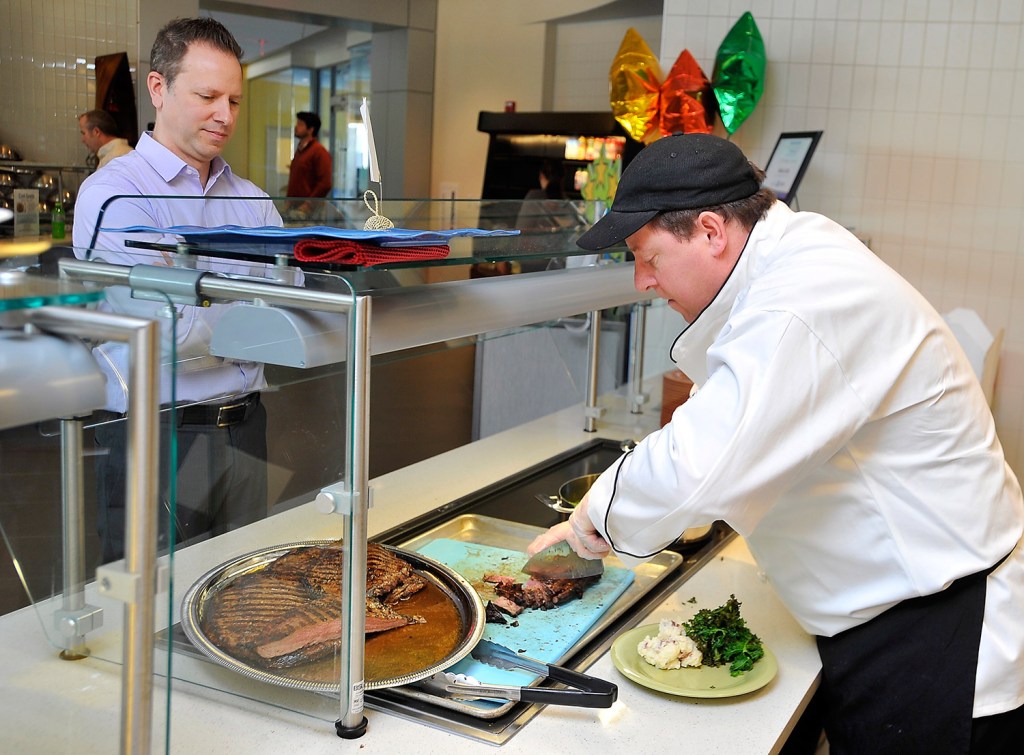
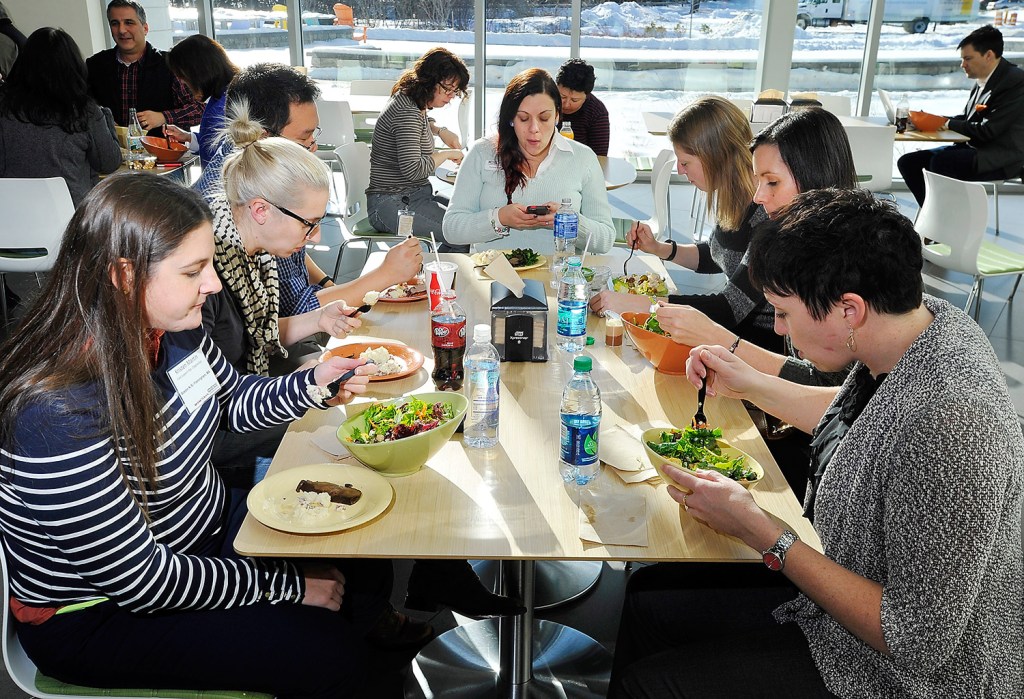
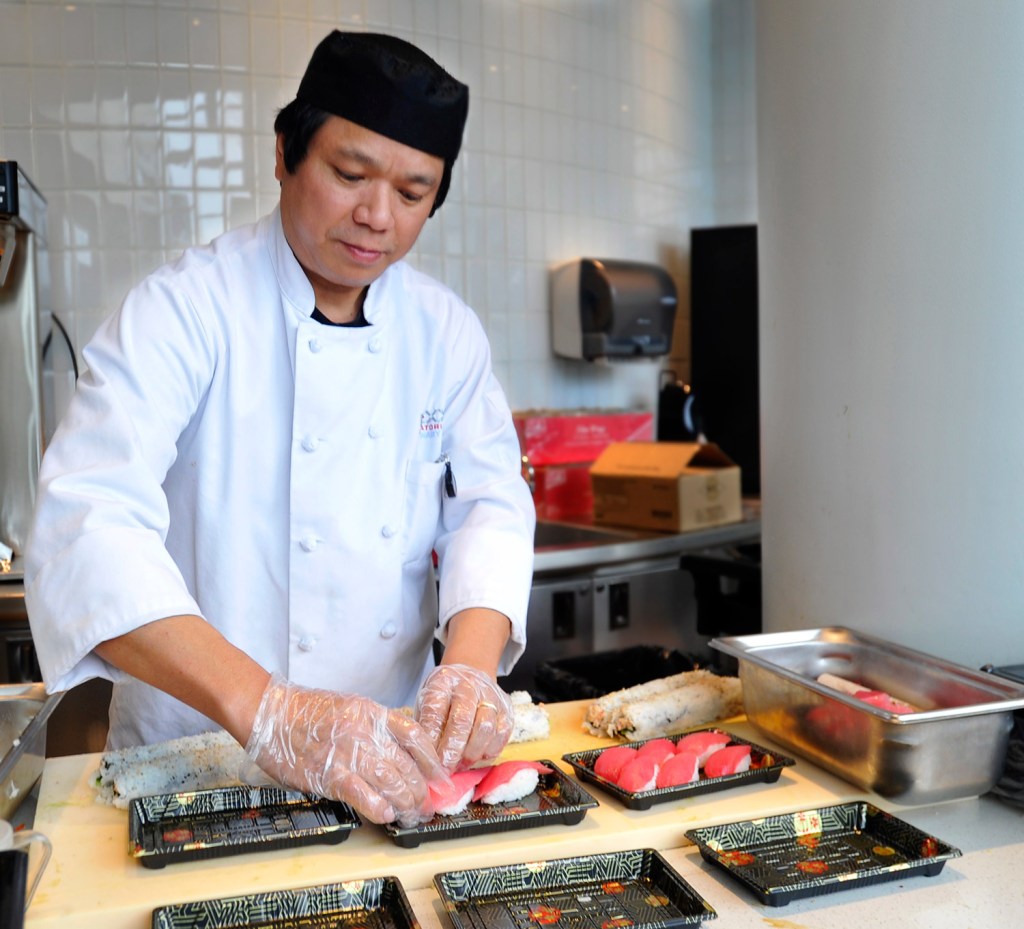
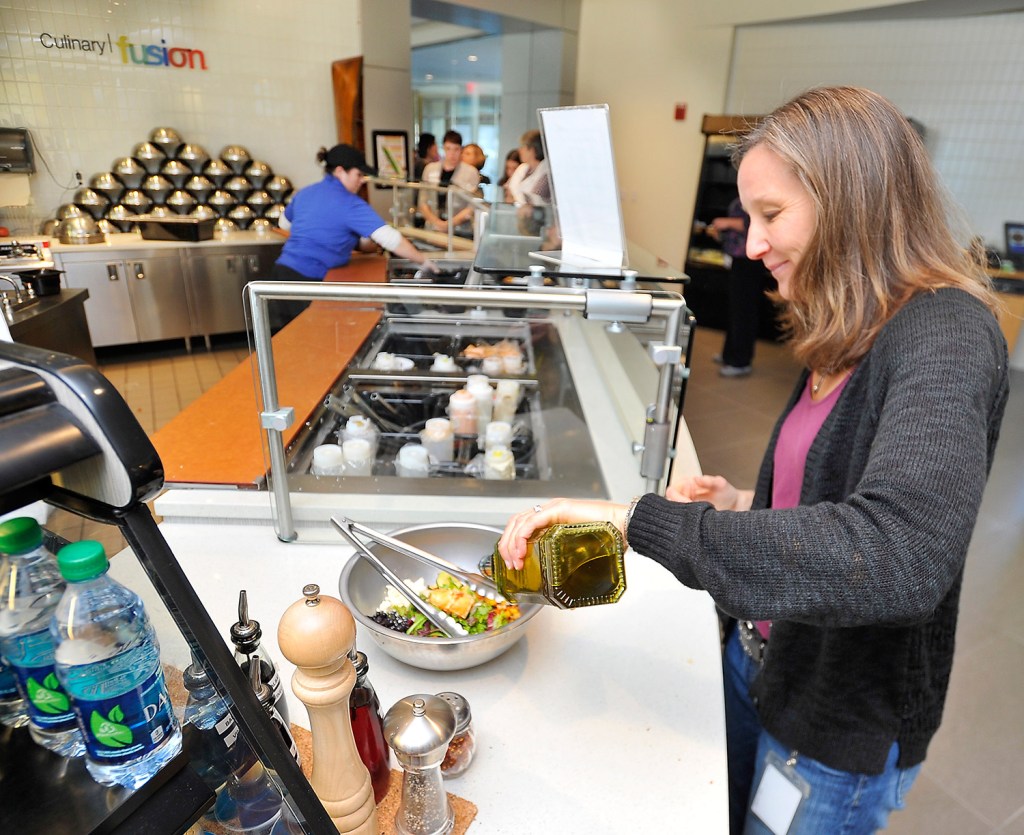
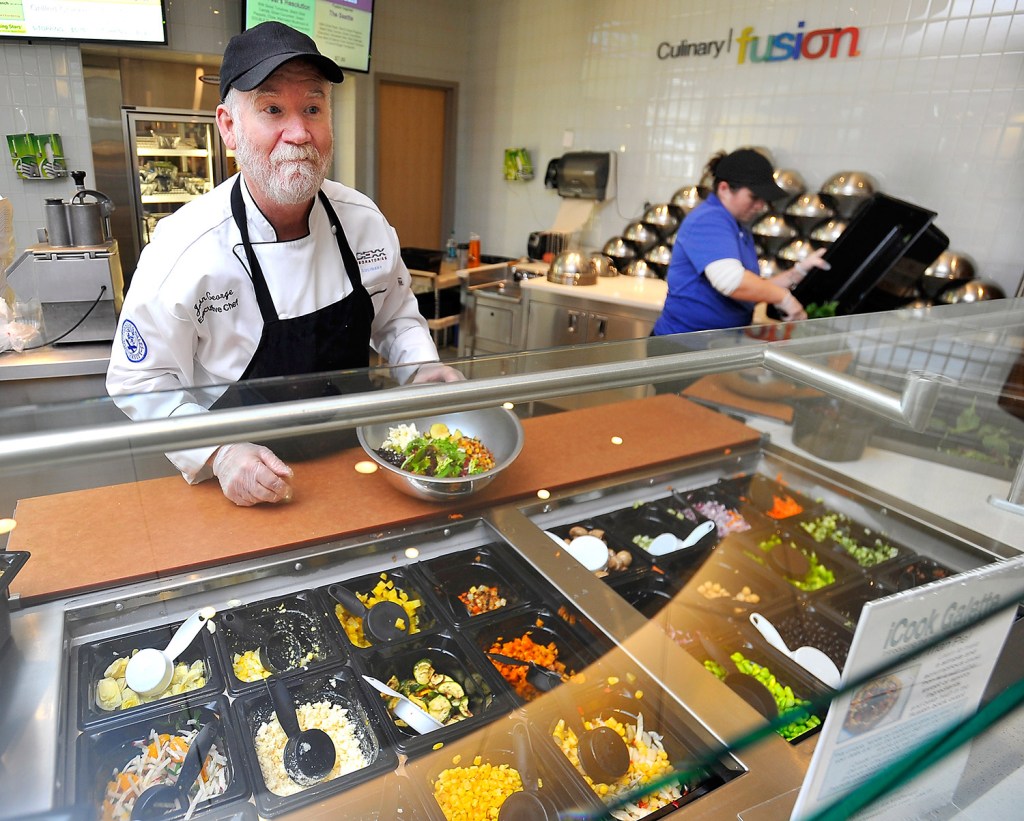
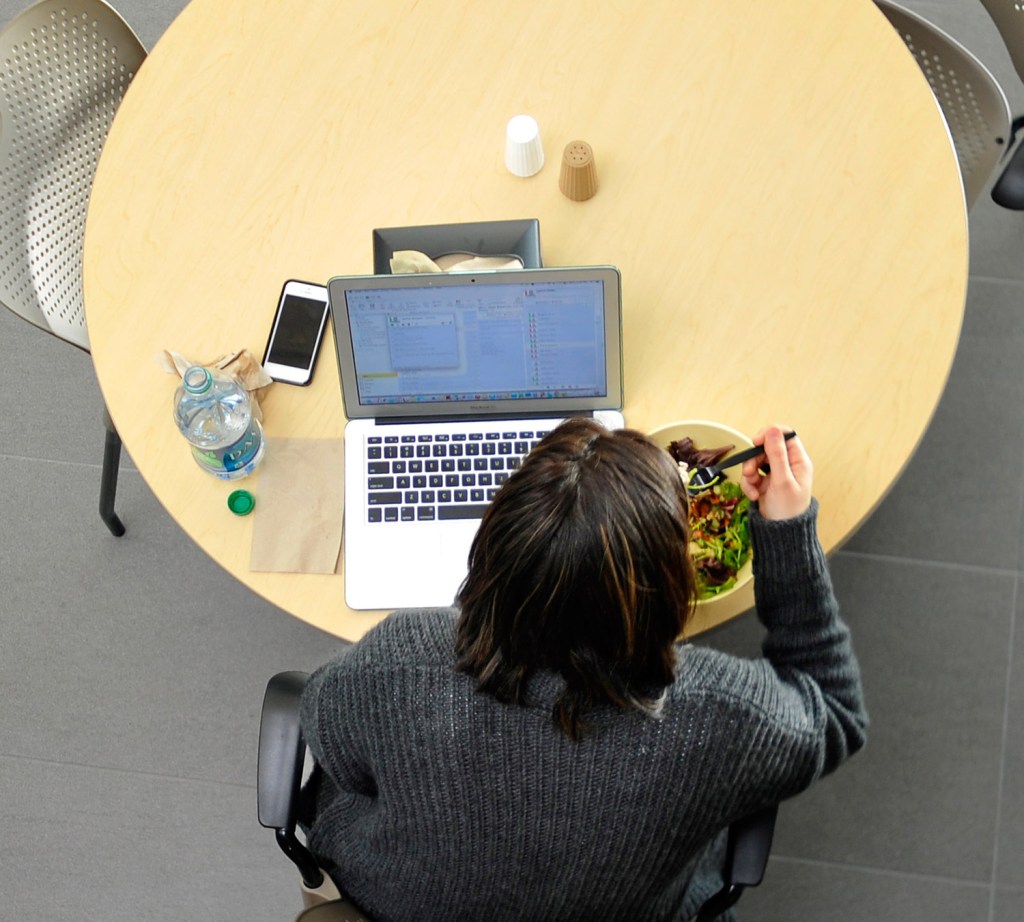
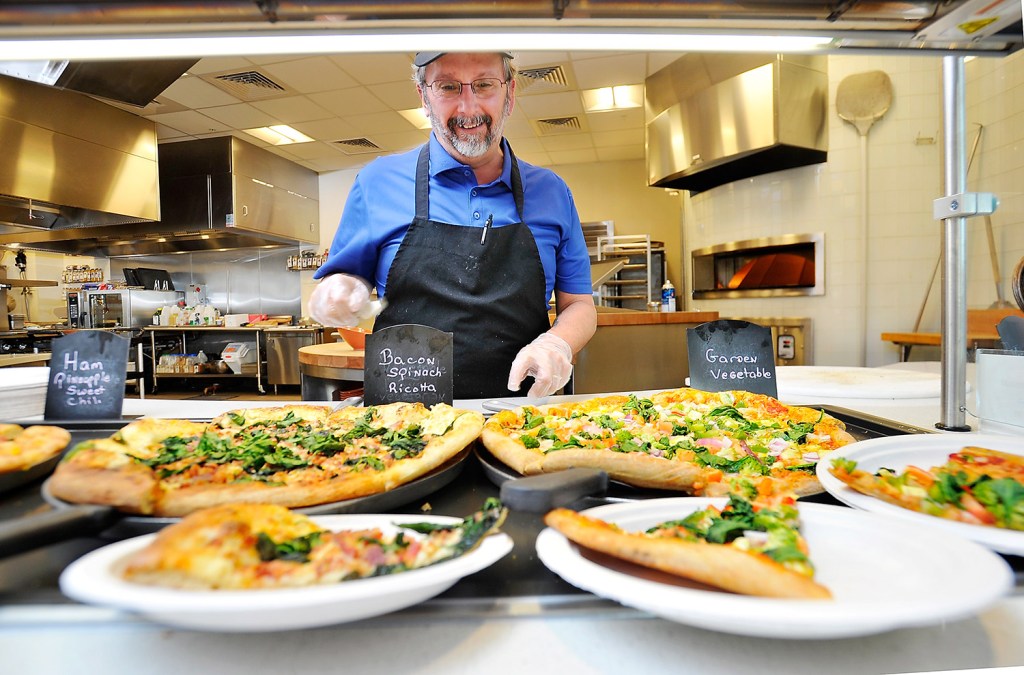

Comments are no longer available on this story